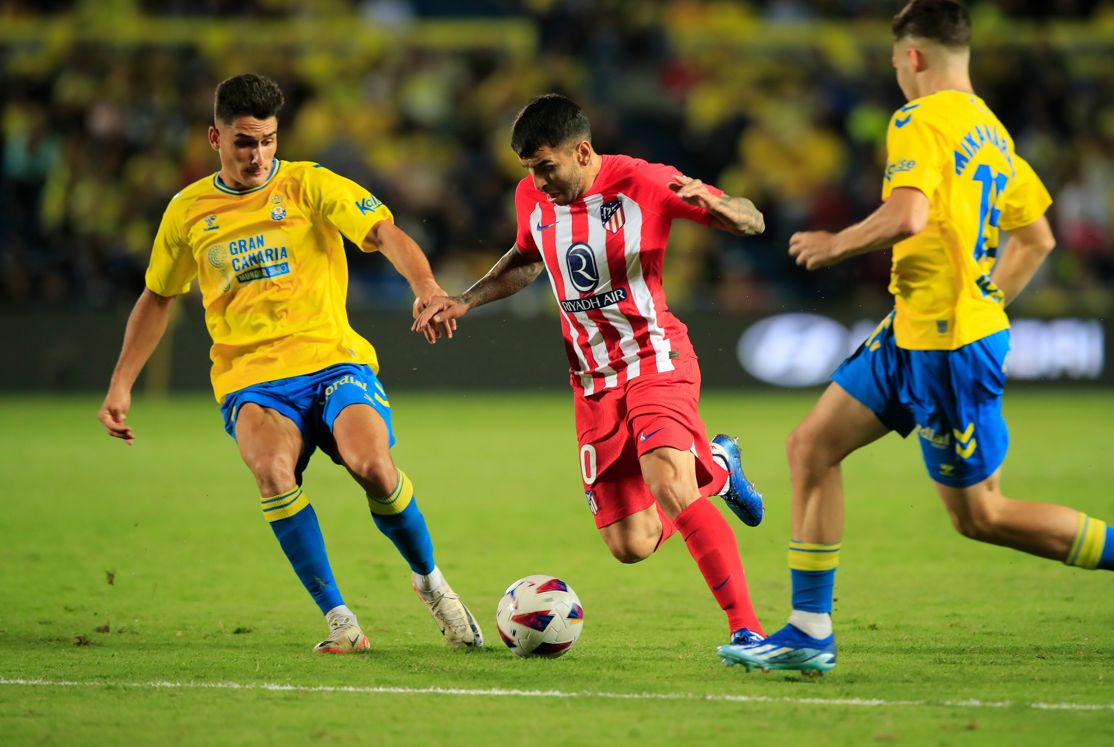
There are many links, from a familiar badge to Vicente Calderon's business trips to the so-called Atletico Canario.
Atletico Madrid will host The Palms at the Metropolitano on Saturday at 14:00 CET, in a match between two sides that share a curious connection. The yellow ones pulled out a solid display to finish the athletesThe streak of six consecutive victories in the league defeating The Whites and Reds 2-1 at home back in November in front of 30,080 fans. This was Las Palmas' first win against Atléticoin in three decades, with their previous triumph The Whites and Reds dated back to 1987, when none of the three goalscorers in the November encounter – Kirian Rodriguez, Benito Ramirez del Toro or Alvaro Morata – had been born.
So Atletico Madrid will be looking to avenge their defeat at the hands of Las Palmas, with Saturday's match offering us the chance to deepen the peculiar connection between the two clubs.
A familiar badge on the crest of Las Palmas
Eagle-eyed fans will surely have noticed that the Las Palmas crest features a few different badges, including one that is very similar to Atletico Madridthe badge of. However, a closer look reveals that the animal that appears on it looks like a dog and the tree could be a palm tree, both historical symbols of the Canary Islands. These two seem to replace the bear and the strawberry tree, which appear the athletesThe badge as symbols of Madrid.
Meanwhile, the letters “C” and “A” between the stripes represent Club Atletico, a team formed from the refoundation of Club Deportivo Santa Catalina. That club decided to change from a blue and black shirt and black shorts to a red and white shirt and blue shorts, it resembles the colors of the Atletico Madrid kit.
The foundation of Las Palmas
Canarian football, previously isolated from the continent's championships, experienced a crucial moment at the beginning of the 1940s, at a time when the powers of Spanish football signed the best youngsters from the islands. Despite the initial resistance, the big local clubs joined forces in 1949 to establish the Uniun Deportiva Las Palmas, symbolizing a union of Canarian football to try to keep the top talents at home.
Las Palmas was the result of a merger between five Canarian clubs: Marino Futbol Club, Real Club Victoria, Club Deportivo Gran Canaria, Arenas Club and Club Atletico, with all five badges being included in the crest of the newly formed team .
More historical links
Historically, Atletico Madrid has been one of the main destinations for players from the Canary Islands. At the end of the 1940s, Canarian players such as Alfonso Silva, Rafael Mujica Gonzalez, Antonio Duran, Rosendo Hernandez and Miguel el Palmero appeared in a Athletes team that won league titles in 1949/50 and 1950/51 under legendary coach Helenio Herrera. That team was nicknamed Atletico Canario due to the number of Canarian footballers included in the team.
The enduring relationship between the two clubs continued through Vicente Calderon's tenure, with the former Atletico Madrid president often traveling to the Canary Islands for business reasons.
Juan Carlos Valeron and Vitolo, are two of the most famous Canarian players who have appeared at Las Palmas and The Whites and Reds in the modern era. The former played for a struggling Atletico Madrid side that was relegated at the end of the 1999/2000 campaign, before moving to Deportivo, where he became a club legend. As for the latter, The Whites and Reds activated Vitolo's buyout clause and signed him from Sevilla in 2017. However, injuries have meant that Vitolo has never managed to establish himself in Diego Simeone's side and is expected to leave the club at the end of the season, when his contract will expire. .
Meanwhile, his teammates will be looking to get back to winning ways after losing in Sevilla last weekend. To do that, Atletico Madrid will have to overcome Vitolo's boyhood team, a solid Las Palmas, who beat Valencia at home and now sit just three points off the European places.
Look at LALIGA Viaplayavailable in the UK on Sky, Virgin TV, Amazon Prime Video and via streaming.

